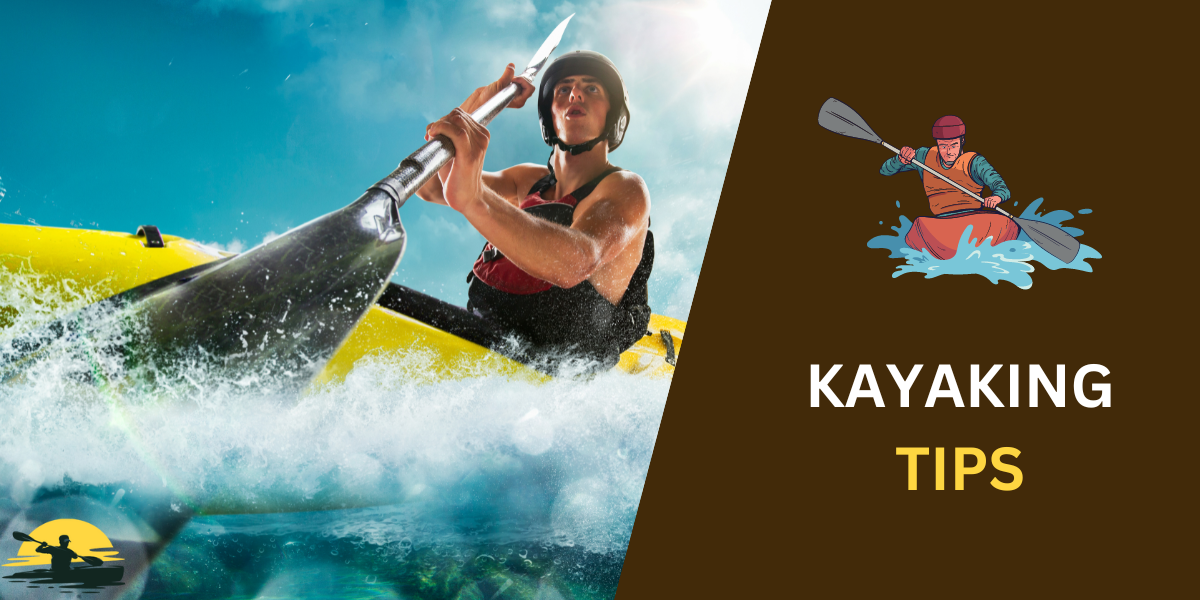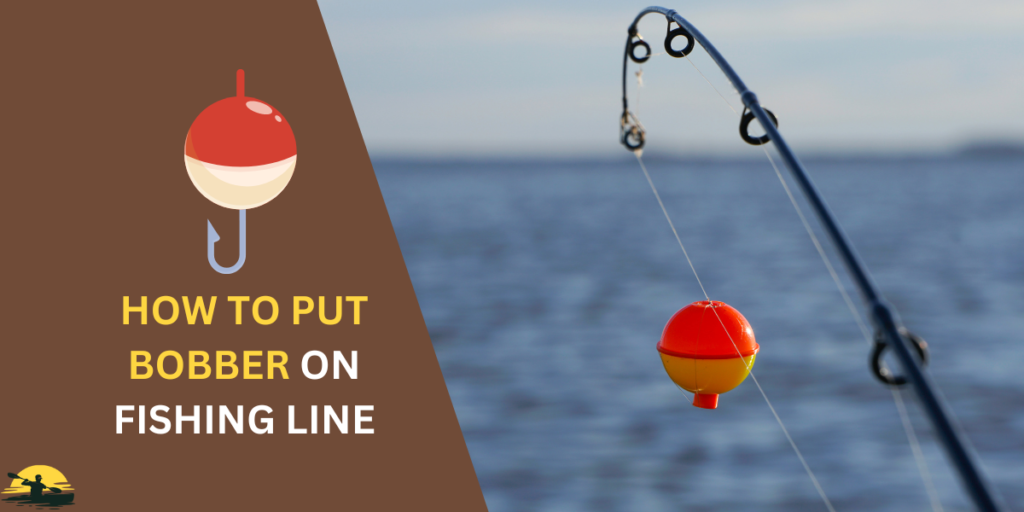
Have you ever seen a bobber dancing on the water, signaling a fish bite?
That’s the magic of bobber fishing! Whether you’re using a slip bobber for deep water or a fixed bobber for shallow spots, this simple fishing rig can help you catch more fish.
From understanding the different types of bobbers to mastering the techniques for setting the hook, this guide will teach you everything you need to know about bobber fishing.
So, let’s dive into the world of float fishing and learn how to put a bobber on your fishing line.
Bobber Fishing Made Easy
- What’s a Bobber? It’s a float that attaches to your fishing line and signals when you have a bite.
- Why Bobbers Rock: They tell you when a fish bites and help control bait depth.
- Choose Your Bobber: Slip bobbers for deep water and fixed bobbers for shallows.
- Gear Up Line, hook, bobber, and optional sinker (split shot).
- Assemble Your Rig: Tie the hook, add the sinker (if using), then the bobber.
- Cast and Observe: Watch for your bobber to jiggle, dip, or go under.
- Set the Hook: Reel In Quickly lift your rod and reel in your catch!
- Troubleshooting Tips: Adjust your rig if your bobber sinks, floats sideways, or gives false alarms.
- Bonus Tips: Pick the right spot, bait, and experiment with different setups.
Understanding Bobbers
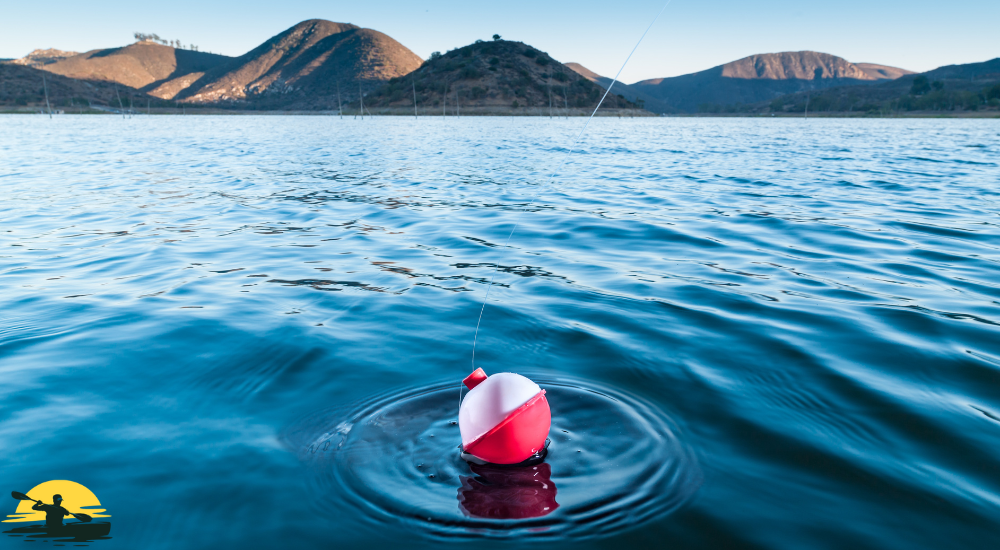
- Instant Fish Alarm: Bobbers dance or dip when a fish bites, giving you a clear signal to reel in.
- Depth Control: Easily adjust how deep your bait sits to match where the fish are hanging out.
- Variety for Versatility: Slip bobbers for deep water, fixed bobbers for shallows, and even glow-in-the-dark options for night fishing.
- Bait Flexibility: Use bobbers with live bait like worms or switch it up with artificial lures.
- Level Up Your Skills: Whether you’re a newbie or a pro, bobber fishing is a skill that will help you catch more fish.
- Keep Fishing Fun: Remember to practice catch and release to help keep our fish populations healthy.
How to Put a Bobber on a Fishing Line
Alright, let’s get your bobber on your fishing line! Don’t worry, it’s easy peasy. Here’s what you need:
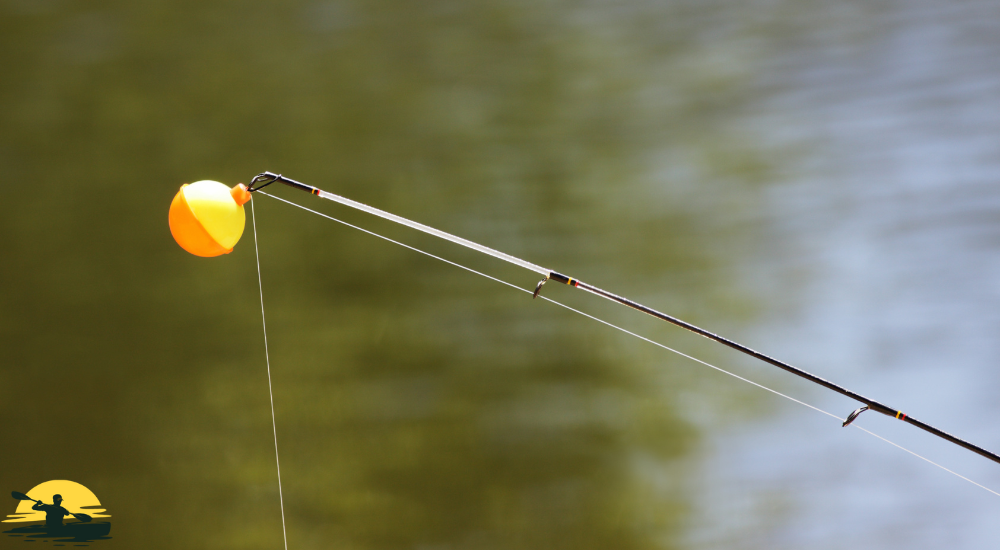
- Fishing line: This is the string that connects your rod to the hook.
- Bobber: Choose one that’s the right size and type for your fishing spot.
- Fishing hook: The size and style depend on the fish you’re trying to catch.
- Split shot sinker (optional): These small weights help your bait sink and keep your line straight.
Attaching Method
- Tie your hook to your line: An improved clinch knot is a good choice because it’s strong and easy to tie.
- Add a split shot (optional): If you’re using one, pinch it onto your line about 6-12 inches above the hook.
- Attach your bobber: This depends on the type of bobber you have. Some bobbers slide onto your line, while others clip on. Could you follow the instructions that came with your bobber?
- Adjust the depth: Slide your bobber up or down the line to set how deep you want your bait to go.
Extra tips for bobber pros:
- If you’re fishing in shallow water, you might not need a split shot.
- Use a smaller hook if you’re targeting smaller fish.
- Try different colors of bobbers to see what works best in your fishing spot.
That’s it! You’re ready to cast your line and see what you can catch. Remember, practice makes perfect, so don’t get discouraged if you don’t catch a fish right away. Just keep trying and have fun!
Advanced Bobber Techniques
Alright, you’ve got your bobber rig set up. Now, let’s get fishing!

- Cast it Out: Swing your fishing pole forward to cast your line out into the water. Aim for a spot where you think fish might be hiding, like near weeds or underwater structures.
- Watch Your Bobber: Keep your eyes on the bobber. It’s your fish alarm! When a fish takes the bait, the bobber will start to jiggle, dip, or even disappear underwater.
- Set the Hook: When you see your bobber move, it’s time to set the hook. Quickly but smoothly lift your fishing rod to pull the hook into the fish’s mouth.
- Reel it In: Now comes the fun part! Crank the handle on your fishing reel to bring the fish closer. Be patient and let the fish tire itself out before trying to lift it out of the water.
- Release or Keep: If you’re practicing catch and release, gently remove the hook from the fish’s mouth and let it swim away. If you want to keep your catch, please make sure you know the fishing regulations in your area.
Remember, not every nibble will be a fish. Sometimes, the current or wind can make your bobber bob. With practice, you’ll learn to tell the difference between a fish bite and a false alarm.
Common Bobber Problems
Even the best fishermen run into bobber hiccups sometimes. But no worries, most problems are easy to fix:
The Bobber Won’t Float Straight: This usually means your bait is too heavy or your line needs to be clearer. Could you check your hook and make sure it’s not snagged on weeds or your bait isn’t dragging on the bottom?
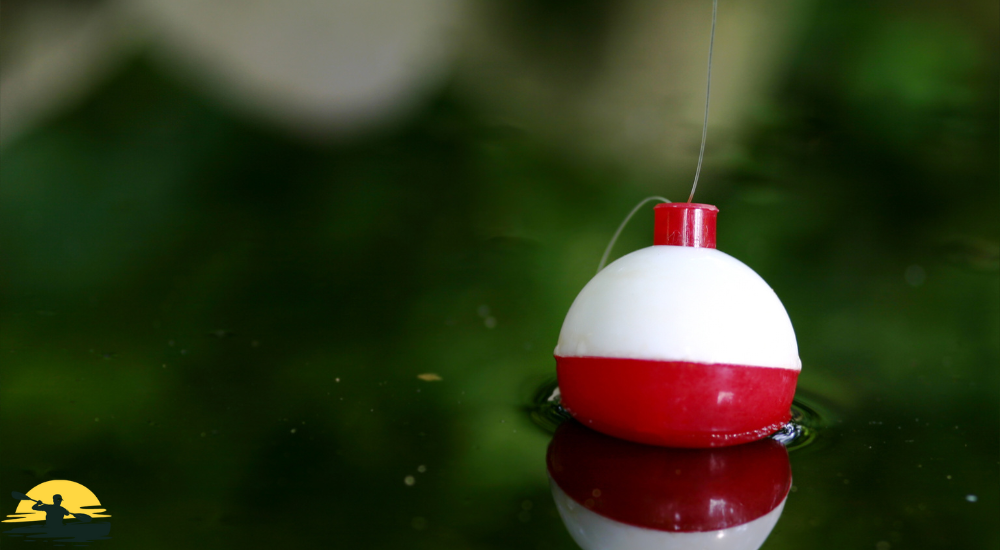
- The Bobber Keeps Sinking: If your bobber is going under but you don’t feel a fish, it’s likely too heavy for your line. Try using a smaller bobber or a lighter weight.
- You’re Getting Too Many False Alarms: A bobber bouncing around without a fish usually means you’ve got too much slack in your line. Reel in a bit to keep your line tight, or try using a heavier bobber.
- The Bobber Isn’t Moving: This could mean there are no fish in the area, or your bait isn’t appealing. Try moving to a different spot or switching up your bait. Soft plastic baits or live bait like worms can be more enticing to fish.
Remember, patience is key in fishing. If you’re not getting any bites, don’t give up! You can try adjusting your bobber rig or trying a new location. With a little persistence and troubleshooting, you’ll be catching fish in no time.
Pros Tips and Tricks
Ready to level up your bobber fishing game? Here are some tips and tricks that even the pros use:
Pick the Perfect Hook
Could you match the size of your hook to the size of the fish you’re trying to catch? A small hook is perfect for panfish, while a larger hook is needed for bass or catfish.
Bait Matters
You can experiment with different types of bait to see what the fish in your area like best. Live bait like worms or minnows can be a good option, but don’t be afraid to try artificial lures, too.

Depth Check
Remember, different fish like to hang out at various depths. Adjust your bobber to make sure your bait is right where the fish are biting.
Location
Look for areas with structure, like weed beds, fallen trees, or rock piles. Fish love to hide in these spots.
Weather Watch
Fish are more likely to bite when the weather changes. Try fishing before a storm or when the wind picks up.
Don’t be Afraid to Ask
Talk to other fishermen or bait shop owners. They can give you great tips on what’s working best in your area.
Extra tips:
Most importantly, remember to have fun! Fishing is a great way to relax and enjoy the outdoors. So grab your fishing rod, head out to your favorite fishing spot, and start practicing those bobber skills. Who knows, you might even catch the biggest fish of the day!
Conclusion
Alright, you’ve got the scoop on bobber fishing! Remember, it’s all about finding the right combination of bobber, bait, and location for your fishing trip.

You can experiment with different hook sizes, sliding sinker weights, and even the type of bobber you use.
Want to fish in deeper water? Try a sliding sinker bottom rig with a slip bobber. Have you hooked a small fish? Gently remove the hook and let it go—catch-and-release helps keep our fish populations healthy.
Now, grab your fishing rod and head out to your favorite fishing hole!
With these tips and tricks, you’ll be a bobber fishing expert in no time. Just remember to have fun, be patient, and enjoy the thrill when you feel that fish strike your line and your rod tip bends. Tight lines!
Frequently Asked Questions
What kind of hook should I use with a bobber?
The hook size depends on the fish you’re targeting. Smaller fishing hooks (size 8-14) are good for catching panfish like bluegill and crappie. For larger fish like bass or catfish, you’ll want larger hooks (size 2-6).
How do I attach the bobber to my line?
This depends on the type of bobber. Spring-loaded bobbers usually have a button you push to open a fish hook, while slip bobbers have a hole or eyelet you thread your line through. Fixed bobbers often clip onto your line.
What is the best way to handle fish when using a bobber rig?
Wet your hands before handling fish to prevent removing their protective slime coating. Support the fish’s belly and avoid squeezing it too tightly. For catch-and-release, quickly unhook the fish and return it to the water.
What kind of sinker should I use with a bobber?
Split shot sinkers are a good all-around choice for bobber fishing. They’re small and easy to adjust if you need to change the depth of your bait. For larger bait or stronger currents, use an egg sinker.
When should I use a slip bobber instead of a fixed bobber?
Slip bobbers are great for fishing in deeper water or when you need to cast your bait a long distance. They allow your bait to sink to the desired depth without the bobber interfering. Fixed bobbers are ideal for shallower water or fishing near the water’s surface.



